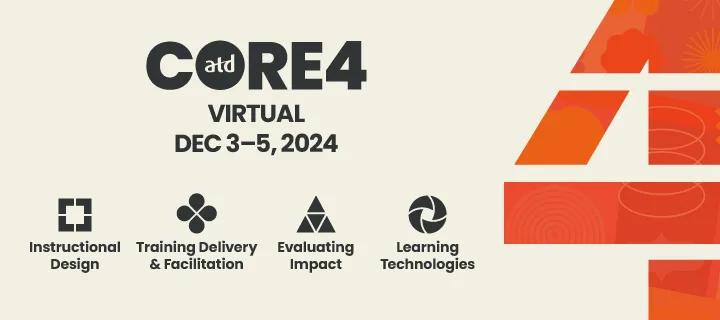ATD Blog
Laying the Cornerstones: The Importance of Building Your L&D Career on a Solid Foundation
Wed Aug 14 2024

In the ever-evolving world of corporate training and development, professionals often find themselves at a crossroads. The choices? Either keep pace with the latest trends or anchor your approach in time-tested methodologies. But what if you didn’t have to choose?
The Significance of a Solid Foundation
Building a successful career in learning and development (L&D) isn’t just about keeping up with the latest tools and technologies. It’s about understanding the fundamental principles that make training effective and transformative. Just as architects wouldn’t dream of erecting a skyscraper on shaky ground, L&D professionals must establish their careers on robust, proven methods and approaches. These foundational elements ensure that no matter how high you grow in the organization or how boldly you innovate your programs, your delivery strategies will support the shifting challenges of aligning organizational mission with workforce learning.
According to LinkedIn’s 2020 Workplace Learning Report, L&D professionals have seen a 27 percent increase in budget allocation toward talent development as more companies recognize the direct impact of training on business success. Deloitte’s Human Capital Trends Report of 2021 also highlights that organizations with advanced training programs exhibit 218 percent higher income per employee than those with less comprehensive programs.
One unique session at the CORE4 conference is designed to fortify your toolkit with 50 powerful ideas spread across four cornerstone areas of L&D: Instructional Design, Training Delivery and Facilitation, Evaluating Impact, and Learning Technologies. Here’s a sneak peek at what will be covered in each of these areas.
Fundamentals of Instructional Design
Instructional design is the blueprint of effective training. It’s about crafting experiences that are educational, engaging, and tailored to meet specific learning objectives. This means starting every project with clear, actionable objectives and understanding your audience’s needs and backgrounds to create relevant and resonant content.
Training Delivery and Facilitation
Once your design is in place, delivery is where your plans come to life. This topic area is about how to engage and inspire your learners from the moment they walk into the room—how to use technology to enhance interaction, manage energy levels throughout sessions, and encourage active participation.
Evaluating Impact
What’s the value of training if you can’t measure its success? Evaluating impact is crucial for every L&D leader to demonstrate the ROI and gain support for continuously improving your programs. In this section, you will learn various techniques for using pre- and post-assessments effectively, leverage learning analytics, and conduct follow-up studies to track long-term effectiveness. These tools are vital for L&D professionals looking to prove and improve the worth of their initiatives.
Learning Technologies
The right technology can make or break your training effectiveness. You will learn about innovations in learning technologies, from LMS features that streamline administration to mobile learning solutions that cater to on-the-go professionals. You’ll discover how gamification can turn learning into a fun, engaging process and how virtual reality is being used to create immersive, meaningful training experiences.
Why Attend Core4?
The ATD Core4 event in Phoenix is an information-packed event.
Whether you're a newcomer or a seasoned pro, this year's conference offers the perfect opportunity to ignite your creativity, enhance your skillset, and stay updated on the latest trends.
I personally look forward to sharing my session: 50 Ideas in 50 Minutes to Avoid Common and Costly L&D Leadership Mistakes. It is my goal to help you build a solid foundation of the L&D fundamentals that will support your career growth for years to come.



